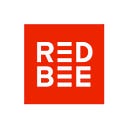Reverse Evolution: The New Design Trend?
Two years ago, we commissioned a piece of research asking 101 senior marketers from across a range of sectors how they felt their brands’ visual identities were holding up in the “drive to digital.” At the time, 89% of marketing decision makers thought their brands faced a significant challenge establishing a distinctive identity in the digital age.
It didn’t surprise us. Along with many others in the design community, we’d been noticing the stripped-back, minimalist approach to design that had seen many brand logos take on a decidedly similar look.
While there’s nothing wrong with any of these logos or design choices, it did make us question if some brands were so concerned about creating a “digital” look that they had forgotten what it was that made them distinctive.
Two years is a long time in the world of design and so it’s not surprising that the tide has been turning. Take Match.com’s latest logo redesign. They’re not the first to make the move from the sea of sans serif to a juicy serif, but they are bucking the trend of pretty much every other digital dating brand logo.
We love a classic serif. In fact, we like to think we were early adopters with our Oasis rebrand in 2018 when we used the lovely Gabriela Stencil as the brand’s headline copy. But when every other brand has a similar style of headline font (even my local estate agents use it in their Sale signs), we start to get twitchy.
It’s impossible to outpace a design trend, so our advice to clients doing a rebrand is to make sure they don’t lose any distinctiveness in their brand identity in the quest to refresh. Yes, consider the small spaces and backlit screens where your logo will live. Yes, consider category norms that audiences have come to understand. But don’t lose what made your brand identity distinctive.
This may be why we were pleased to see a little “reverse evolution” in some big brand re-designs of the last year or so. Reebok’s is maybe the most back-to-the-future as it gets: after ditching their legacy logo in 2014, they came back around to their original ’70s typography style and ’80s icon.
More recently, we noticed a similar reverse evolution with a new execution of the Warner Bros logo. Its 2019 redesign saw it stripped of much of its glorious and gold emblematic crest. But lo, its latest design, featured in the opening sequence of the new HBO Max film, Locked Down, brings back a little hint of metallic glint. Who knew we missed shiny 3D so much?
If we were the betting kind, our hunch would be that more brands will feel the loss of their once-distinctive design and look back to their heritage marks for inspiration.
Who wouldn’t be pleased to see this old friend come back at some point? Still one of our favourite lowercase ‘g’s ever.
Aileen Madden, Deputy Managing Director
